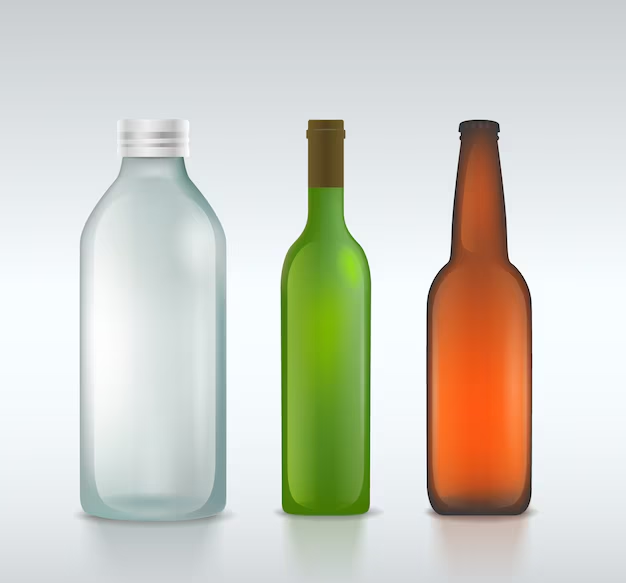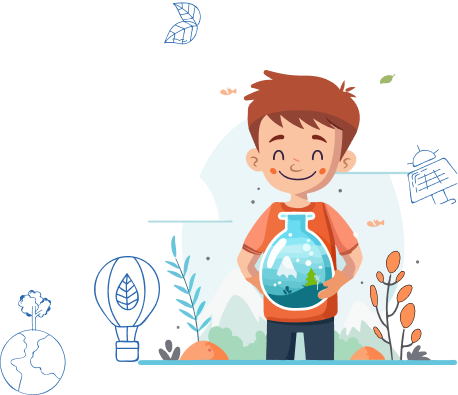This World of Things – Complete Guide For Class 3 EVS Chapter 10
Welcome to iPrep, your Learning Super App. Our learning resources for Chapter 3, This World of Things, in Class 3 EVS provide a well-rounded educational experience. They include in-depth notes, interactive exercises, and practical examples, ensuring students fully grasp key concepts. Covering a wide range of topics, these resources help students understand the principles of the material world, from recognizing various objects around them to exploring their uses and importance in daily life. This comprehensive approach aids in developing a strong foundation in environmental studies.
The concept of “This World of Things” in Class 3 EVS introduces students to the foundational principles of life by exploring the essential characteristics that define living and non-living things. It helps children identify objects around them and understand how they interact with their surroundings. The chapter delves into the properties that make things alive, such as growth, movement, and reproduction, while emphasizing the importance of understanding the natural and man-made world. This framework fosters a deeper connection with the environment and everyday objects. Let’s start the chapter by understanding the objectives of learning this world of things.
Objectives Of Learning This World Of Things
The objective of learning the chapter “This World of Things” in Class 3 EVS is to introduce young learners to the basics of the material world around them. Through “This World of Things,” students explore various objects they encounter daily, learning to differentiate between natural and man-made items, as well as understanding properties like transparency, flexibility, and durability. By studying “This World of Things,” students gain foundational insights into how everyday objects are made and classified, fostering curiosity and a sense of connection to their surroundings.
Let’s Take a Look Around Us!
Khushi arrives early at school. As sunlight shines through the windows, her classroom looks bright and beautiful. She is inspired to capture this scene by drawing it. Can you identify the things she drew? Write their names in the given boxes.
Window Glass – Can You See It?
Do you notice the window glass? Why or why not?
Understand Your Classroom
Draw a picture of your classroom and label the items you see. Khushi, filled with curiosity, wonders about the origin of the things in her classroom—who made them and what they are made of.
The table and chair are made of wood. But where does the wood come from? The hinges, nails, and latches of the door are made of metal. Metals come from ores, which are extracted from the Earth.
Note to Teachers:
Show children common metals around them—iron, copper, aluminum, gold, silver, mercury (in thermometers), and alloys such as steel, brass, and bronze.
Spot the Metals
Find as many metal objects or parts as possible. List them in your notebook. If you don’t know the metal’s name, ask friends or an elder for help.
- Question: What other things like mats, bulbs, and electric switches are made of?
See-Through Materials!

Khushi realizes she can see the flowers and trees outside through the window glass. Glass allows light to pass through, making it transparent.
- Does your window have a glass pane? Can you see through it? What do you see?
Seeing Through Things
Another fun activity from the chapter “This World Of Things” is the activity of seeing through things.
Collect small objects made of different materials like bottles, papers, cloth, and utensils. Look at a light bulb or candle flame through these objects. Some allow clear visibility, some allow partial, and others block visibility altogether. List them according to how clearly you can see through.
See Through Clearly See Through Partially Cannot See Through At All
- Caution: Never look directly at the sun through any object. It can harm your eyes.
Transparent objects allow you to see through them. Most glass is transparent. Can you name another transparent material? On the other hand, wood is opaque, meaning you cannot see through it. Some materials, like frosted glass, are translucent, letting only some light pass through.
Let’s Colour the World!

Collect a few transparent bags or bottles of different colors. Look at a white sheet of paper through them. Does the color of the paper appear to change? Does a blue object look different when viewed through yellow plastic? Reflect on your experiences of looking through colored objects.
What is it Made Of?

In the classroom, Khushi groups objects by the materials they are made of. Here’s a table for reference:
Khushi’s List Material Objects Made of This Material (in Classroom or Home) Table, chair, door Wood Pencil Door hinges, nails Metal Windowpanes, lightbulb Glass Electric switches Plastic
- Where do these materials come from?
Wood – Tree
Metals – __________
Glass – Mostly made of sand
Cloth – __________
Talk to Your Grandparents
The chapter “This World of Things” moves forward with a fun activity.
Ask your grandparents if things in their childhood were made from the same materials. Are there new materials now that they didn’t see before? Are there materials that they used but are no longer in use? Why?
Knock on It and It Will Speak to You!
Another fun activity in the chapter “This World Of Things” is speaking with things.
Using a metal spoon, to gently tap objects made from different materials (wood, metal, plastic, cloth, and glass). Describe the sounds each material makes. Now, compose your beats using the sounds.
Does It Bend?


Wood, which is hard and rigid, is ideal for making tables, while fabric is soft and flexible. Imagine if clothes were made of wood! Create a list of five objects paired with materials unsuitable for them and explain why.
S.No. Object Material Reason 1 Umbrella Paper Paper tears easily when wet. 2 3
Does It Flow?
Water flows, which means it is a liquid. Air, though it flows differently, is a gas. Solids, like stones, maintain their shape, while liquids and gases do not.
Objects can be classified as solid, liquid, or gas.
Solid Liquid Gas
Group Objects by State
Here are some objects: ink, stone, smoke, ice, steam, spoon, honey, bottle, bag, and water. Classify each as a solid, liquid, or gas.
Add more objects and classify them. Some objects like sand, sponge, or clay might be tricky—think carefully about them.
Natural vs. Artificial
Khushi drew a picture of a mango tree and a bird. Natural things are those that exist in nature, such as trees, mangoes, and birds. Artificial things, like clothes and tables, are made by humans.

List five natural and five artificial things around you.
Let Us Reflect
- Write: Name three materials commonly found around you.
- Discuss: How would you determine whether a shiny spoon is made of metal or just painted?
- Draw: Draw three natural and three artificial objects.
- Do: Match the following:
| Transparent | A glass used in spectacles |
| Translucent | A lampshade made of paper |
| Opaque | A plate |
Conclusion
In conclusion, CBSE Class 3 EVS Chapter 10, “This World of Things,” empowers students to observe and analyze the materials and objects that make up their world. Through a mix of hands-on activities, thought-provoking questions, and relatable examples, Class 3 students engage deeply with the concepts of transparency, flexibility, and natural vs. artificial distinctions. This exploration in Chapter 10 of Class 3 EVS helps young learners recognize the variety of materials, from wood and glass to metal, fostering curiosity about how these items shape our everyday lives. By examining “This World of Things” in Class 3 EVS, students build foundational knowledge that strengthens their appreciation and understanding of the material world around them.
Practice questions on Chapter 10 - This World Of Things
Get your free Chapter 10 - This World Of Things practice quiz of 20+ questions & detailed solutions
Practice Now








